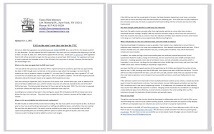 At the close of my previous posting about the embarrassingly low cutoff score (30 out of 87, or 34.5% was scaled to be a 65) in the June Regents Integrated Algebra exam, I promised to post a small sample of math problems posed to graduated fifth graders in China. First, some brief background.
At the close of my previous posting about the embarrassingly low cutoff score (30 out of 87, or 34.5% was scaled to be a 65) in the June Regents Integrated Algebra exam, I promised to post a small sample of math problems posed to graduated fifth graders in China. First, some brief background.Primary schools in China run from grades 1-6, middle school 7-9, and high school 10-12. Each summer, elementary school students in Suzhou (a city of 1.5 million located about 50 miles west of Shanghai) receive a 60-75 page, multi-subject workbook they are expected to complete during their vacation break. The problems below are translated directly from the 2003 summer workbook for soon-to-be 6th graders. They are just a small sample from that year's assignment, but they are indicative of the level of mathematics expected from China's incoming sixth graders.
1. Two gear wheels interact with one another. One gear wheel has 72 teeth, and the other has 28 teeth. If both gears have marked starting points that are together when the wheels begin turning, how many times will each wheel rotate before the two marks meet again?
2. Three identical cubes are placed side by side to form a rectangular cube. The surface area of the rectangular cube is 400 square cm. less than the surface area of the three cubes standing separately. What is the length of one edge of the small cubes?
3. A rectangular cubic box is to be made of wood with measurements length 50 cm., width 40 cm., and height 18 cm. How many square meters of wood are needed to make the box?
4. A rectangular piece of cardboard has a length of 32 cm. Squares of 4 cm. on a side are cut out of each corner of the rectangle so that the remaining piece can be folded into an open-topped box. If the volume of the box is 768 cubic cm., what is the area of the original piece of cardboard?
5. Last year, the ages of both a mother and her son were prime numbers. This year, the product of their ages is 532. What are their ages this year?
6. Solve the following problems.
a. 6 – (9/20 + 0.15) = ________
b. 7/16 + 8.15 – 6.9 = ________
c. 7.5 + 3.7 – 3.2 – 5/6 = ________
d. 3/7 +2.16 + 4/7 + 7.84 = ________
e. 2 – (5/6 + 4/15) = ________
f. 1.956 + 4/25 – (1.176 + 3/4) = _______
7. Solve for x.
a. 1 – x = 1/4 + 2/5
b. x – 3.785 = 5 – 1/2
c. x + 8/9 = 11/12
d. 3x – 4.93 = 8.75
As a math major in college and former high school math teacher, I am particularly enamored of the mathematical aesthetics in the first question above. The rotating gear wheel question is a simple but highly elegant variation of a common problem in fraction arithmetic, as is the mother/son age problem in Question 5 (although not quite as elegant a problem formulation). A hint: unlike nearly all schools here in the U.S., Chinese primary schools emphasize the use of prime factorization for fraction arithmetic. Most primary school math teachers here would likely not even know what prime factorization is. Note also the shifting of units of measure in Question 3 and the constant mixing of fraction and decimal number representations in Questions 6 and 7b.
How might our 9th grade Integrated Algebra exam takers last week have fared with these 5th graders' questions?
























